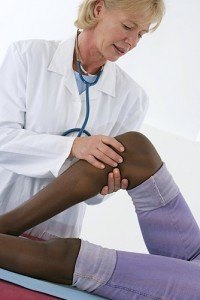News
Untreated Venous Disease Can Lead to Serious Skin Complications

 Longstanding and untreated venous insufficiency can lead to serious complications for patients. Venous reflux, associated with varicose vein disease, can result in increasing symptoms such as leg aching, pain, and swelling. This is a reflection of the increasing venous pressure from progressive valve failure inside the veins. Skin changes, such as stasis dermatitis, can even lead to cellulitis or, may become evident on the lower leg and ankle. Eventually, the skin can break down (ulcerate) with dramatic wounds that are challenging to heal.
Longstanding and untreated venous insufficiency can lead to serious complications for patients. Venous reflux, associated with varicose vein disease, can result in increasing symptoms such as leg aching, pain, and swelling. This is a reflection of the increasing venous pressure from progressive valve failure inside the veins. Skin changes, such as stasis dermatitis, can even lead to cellulitis or, may become evident on the lower leg and ankle. Eventually, the skin can break down (ulcerate) with dramatic wounds that are challenging to heal.
Stasis dermatitis is an inflammation of the skin, caused by damage to the veins in the lower extremities that reduces the flow of blood out of the legs. Symptoms include a red, violet, or brown rash on the skin between the ankle and the knee. The impaired venous blood flow results in leg swelling and triggers a release of inflammatory factors that decreases the skin’s ability to heal, resulting in stasis dermatitis.
Cellulitis is an infection of the superficial and deep layers of the skin, caused by bacteria. Bacteria are normally present on the surface of the skin. When the skin is injured, bacteria can spread beneath the surface and start to grow, which is made worse by the poor blood flow in the feet and legs. Stasis dermatitis can also be a predisposing factor for cellulitis, especially with recurrent leg swelling.
One of the most challenging venous complications is a skin ulcer. A skin ulcer is an open sore that can result from the smallest minor trauma to the skin. Combined with long-term chronic venous insufficiency, this can result in skin breakdown. The area around the ulcer is usually red, swollen, tender and can be painful. Venous ulcers typically occur on the inner aspect of ankle.
Keys to management of stasis dermatitis and venous ulceration are the use of compression wraps/stockings and specialized wound care dressings applied to the ulcer. For patients with venous insufficiency, there is a clear benefit to addressing underlying venous disease with endovenous laser and sclerotherapy to prevent recurrent ulceration.
